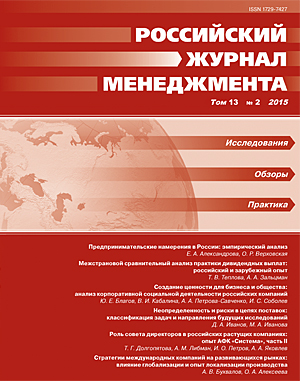Неопределенность и риски в цепях поставок: классификация задач
и направления будущих исследований
Аннотация
В работе на основе анализа статей в международных журналах за 2000–2014 гг. рассматривается проблематика неопределенности и рисков в решениях о структурно-функциональном синтезе цепей поставок. В работе структурированы основные классы рассматриваемых задач, классифицированы основные виды неопределенности и рисков и меры по их снижению. Приведены практические примеры управления операционными рисками и рисками катастроф. Сформулированы перспективные направления будущих исследований.
Ключевые слова:
неопределенность, риск, цепи поставок, исследования по SCM, экономико-математические методы
Скачивания
Библиографические ссылки
The List of References in Cyrillic Transliterated into Latin Alphabet
Загрузки
Опубликован
Как цитировать
Выпуск
Раздел
Лицензия
Статьи журнала «Российский журнал менеджмента» находятся в открытом доступе и распространяются в соответствии с условиями Лицензионного Договора с Санкт-Петербургским государственным университетом, который бесплатно предоставляет авторам неограниченное распространение и самостоятельное архивирование.





